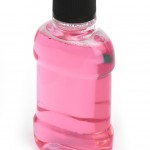
Azadirachta indica (neem) is a medicinal herb native to India and found in many tropical and sub-tropical countries. Studies in vivo, in vitro and in animals have shown various parts of the neem tree to possess a wide range of properties e.g. anti-inflammatory, antipyretic, analgesic, antifungal, antibacterial, etc.
In recent years neem-based dental gels and mouthwashes have been available and a number of studies have been reported. The aim of this review was to evaluate the effectiveness of Azadirachta indica (neem)-based herbal mouthrinse in improving plaque control and gingival health.
Methods
Searches were conducted in Medline, Embase and Cochrane Oral Health Group Specialised Trials Register (CENTRAL) databases supplemented by hand searching the Journal of Clinical Periodontology, Journal of Periodontology, Journal of Periodontal Research, Periodontology 2000, Community Dentistry and Oral Epidemiology, Oral Diseases, Journal of Public Health Dentistry, International Dental Journal and International Journal of Dental Hygiene. Randomised controlled trials (RCTs) comparing the efficacy of neem mouthrinses when used alone or as an adjunct to mechanical oral hygiene as compared to chlorhexidine mouthrinses for controlling plaque and gingival inflammation in patients with gingivitis were considered.
Two reviewers independently screened the studies and assessed quality using the Consolidated Standards of Reporting Trials (CONSORT) checklist. Outcomes across the studies were assessed using the Grades of Recommendation, Assessment, Development and Evaluation (GRADE) approach. Owing to marked heterogeneity in the identified studies meta-analysis was not conducted.
Results
- 3 RCTs were included all of which had an unclear risk of bias.
- All 3 studies were of short duration ranging from 2-4 weeks.
- The quality of evidence was considered to be low.
- No significant statistical difference in treatment outcomes between neem and chlorhexidine mouthrinses were noted.
Conclusions
The authors concluded
The included RCTs showed that there was no statistical significant difference between neem and chlorhexidine mouthrinses (in terms of primary and secondary treatment out- comes measured) when used as an adjunct to toothbrushing in the reduction of plaque and gingival inflammation in gingivitis patients. However, the short study duration (of up to 4 weeks, which is quite less than the ADA recommended study period of 6 months), inherent poor quality of reporting and unclear risk of bias of these RCTs precludes the drawing of firm conclusions regarding the safety and anti-gingivitis and anti-plaque efficacy of neem mouthrinses.
Comments
This review searched 3 major databases only identifying 3 small RCTs of short duration all of which had methodological problems. While the authors of the review suggest that neem-based mouthrinses seem to be an effective alternative to chlorhexidine the evidence to support this seems very weak given the limited number of studies and the problems the review identified with them. It is clear that high quality RCTs of suitable size and duration conducted following the SPIRIT statement and reported following the CONSORT statement are required in order to properly assess the effectiveness of neem-based mouthwash.
Links
Primary paper
Dhingra K, Vandana KL. Effectiveness of Azadirachta indica (neem) mouthrinse in plaque and gingivitis control: a systematic review. Int J Dent Hyg. 2016 Feb 15. doi: 10.1111/idh.12191. [Epub ahead of print] Review. PubMed PMID: 26876277.

Neem-based mouthrinse–little evidence available https://t.co/h3HhIxiRqh
Neem-based mouthwash –little evidence available https://t.co/h3HhIxAsOR
Little evidence available for effectiveness of neem-based mouthwash https://t.co/h3HhIxAsOR
Review finds limited evidence for safety & effectiveness of neem-based mouthrinses https://t.co/h3HhIxAsOR
Limited evidence precludes drawing conclusions about safety and efficacy of neem-based mouthrinses https://t.co/h3HhIxAsOR
Don’t miss- Neem-based mouthwash –little evidence available https://t.co/h3HhIxAsOR